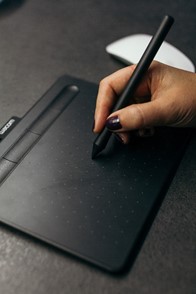

Context
In the recent times, GDPR became one of the most important topics in the day-to-day life of a company and, with that, came up the necessity to adjust the existing processes to meet the legal policies, which brought a couple of challenges.
GDPR is not only about knowing which customer data is stored but also what this data can be used for (which purposes the customer gave their permission for the data to be used). This information needs to be explicitly collected from the customer.
Being a CRM system, Siebel is deeply connected to this topic, considering that we are talking about a system where customer data is stored, leveraging Siebel to play an important role on these changes.
Having the capability to communicate with different systems and devices, Siebel provides the ability to do the integration with signature devices (through APIs) which can help companies to collect the customer consents (preferences and permissions) together with the customer signature, which can bring an extra security for the company.
Instead of using the mouse cursor to 'draw' a signature (which likely results in an unreadable signature), a device where the customer can use a proper pen to input the signature can be used. Thus, that signature will be transmitted (in real time) to Siebel (through 'HTML Canvas Element').
Additionally, the collected signature can be used / embedded in the respective generated documents, using for example, BI Publisher.
What is required?
- Siebel application with OpenUI version;
- Signature device with accessible / usable API
Pre-requirements
There are two different applets associated to the signature feature in Siebel:
- Applet to allow the signature to be captured;
- Applet to allow the signature to be displayed.
You can find out how to configure these applets in Siebel (OpenUI) in the following URLs:
- https://docs.oracle.com/cd/E58886_01/books/LSSIA/LSSIARecordCalls14.html
- https://docs.oracle.com/cd/E88140_01/books/LSSIA/LSSIARecordCalls20.html
Remark: Make sure the signature can be collected (using the mouse) and rendered using the Siebel applets.
How to make it work?
Once the pre-requirements are fulfilled, we can make use of the 'HTML Canvas Element'.
To do the integration between Siebel and the respective signature device, the following steps should be followed:
- After choosing the signature device to be used, read the API documentation, and move the relevant libraries to the correspondent Siebel folder (some devices might require a simple installation);
- Edit the Physical Renderer file (JavaScript) associated to the applet used to capture the signature and refer the (API) files to be imported / used and:
- Use the proper API function to detect / establish a connection and launch the signature device;
- At this moment, the action should be moved to the signature device, where the customer will sign. Siebel will be waiting for the inputs from the signature device.
- Use the proper API function to get the signature being drawn in the device to Siebel;
- It can be communicated in real time or;
- It can be communicated only when the signature is confirmed by the customer in the device;
- Use the proper API function to give back the control to Siebel when:
- Customer confirmed the signature or;
- Customer cancelled the signature process.
- Use the proper API function to detect / establish a connection and launch the signature device;
Note: There are some other API functions available to be used, but that will depend on the chosen device.
- Save the changes and launch the Siebel application (making sure the changed file (PR) is updated on browser side).
The signature device is ready to use and will be launched when the Siebel capture applet is accessed.
Pros and Cons
| Pros | Cons |
| Quality of the signature captured | Acquisition costs of the devices |
| Improves the customer journey | |
| Reduced time of implementation | |
| Information resides in the CRM system |
Final remark: There are some plug and play input devices that acts as a mouse and that come with a pen. These are usually cheaper than the proper signature devices, however, for this purpose, we do not recommend it since these devices consider the entire screen as input area (as a mouse would) and not only the appropriate input area for the signature. It will reduce a lot the quality of the signature captured and will deteriorate the customer journey.
#SiebelIntegration #SignatureDevice #worldIT
